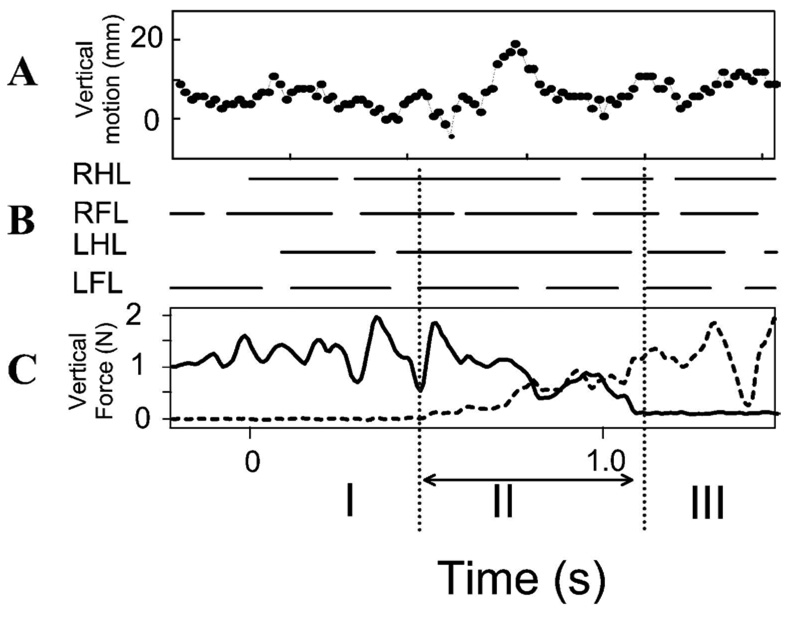Figure 7.
WS ST rats. Gait and vertical force and motion. WS ST rats show little to no relation of midthoracic vertical motion and weight support forces compared to the normal rat. A: video measure of height of a fixed point on the rat’s back (mm). B: stance phases of each leg from video (solid bar: stance). Gait involves significant overlap of steps, very long hindlimb stance periods and rarely are only two legs on the ground. C: vertical support forces. Solid line: sensor 1 vertical force measurement. Dotted line: sensor 2 vertical force measurement. Phase I: rat wholly on sensor 1. Only solid line force is non-zero. Phase II spanning sensors. Net vertical force is sum of solid and dotted traces. Phase III: wholly on sensor 2. Only dotted trace is non-zero. Vertical forces do not relate clearly to vertical motion excursion in the back. Abscissa for all plots: time in seconds. RHL : right hindlimb. RFL: right forelimb. LHL: left hindlimb. LFL: left forelimb.

